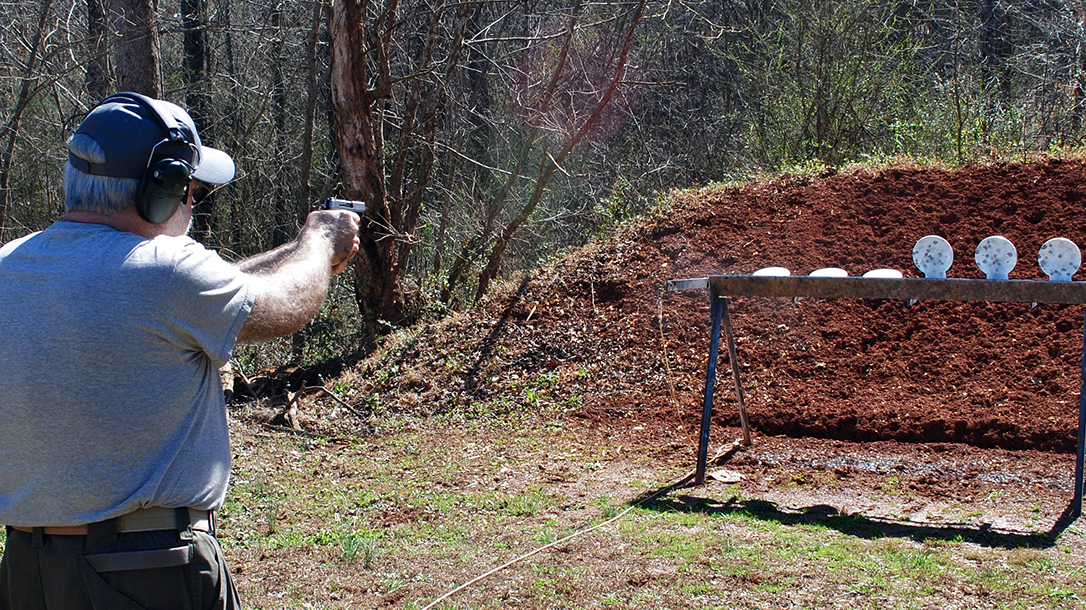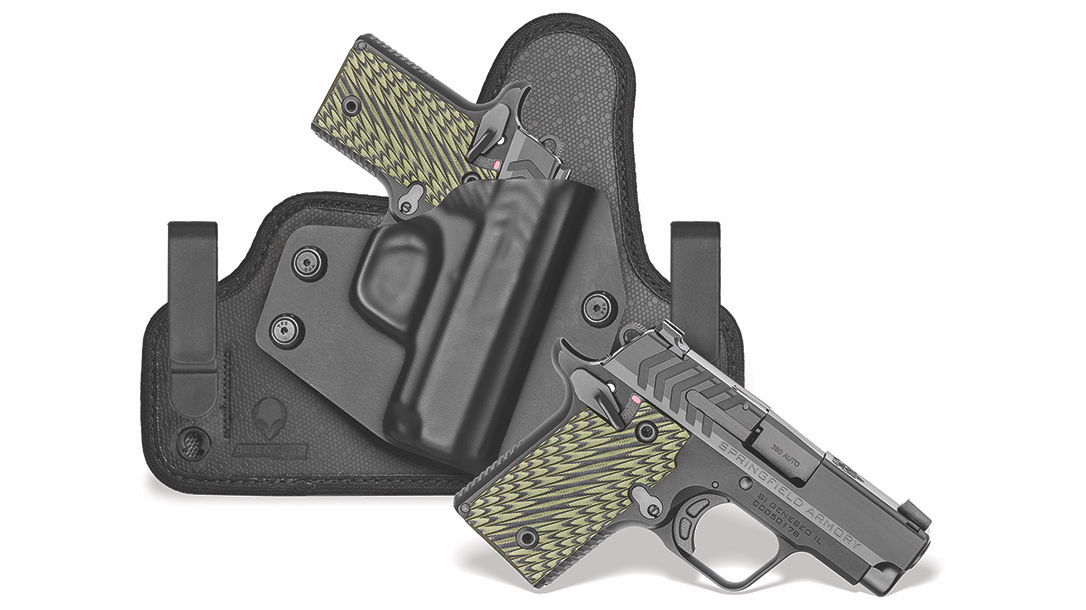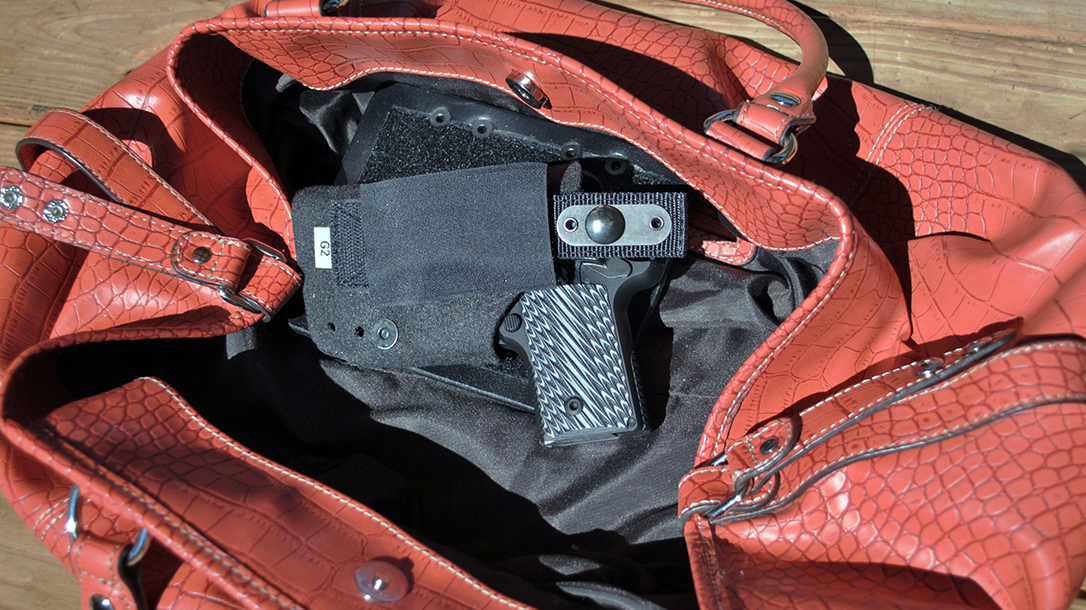With more and more states offering “shall issue” concealed-carry permits, the demand for small, lightweight, concealable pistols and revolvers has skyrocketed. In addition, the number of law enforcement carrying backup guns is growing. The reason for this is simple: If your primary weapon is snatched, runs out of ammo or malfunctions, you draw your backup gun and get back into the fight.
You probably already know that .380 ACP pistols are some of the hottest items on today’s handgun market. More and more gun-makers are offering them, and one just introduced one deserves a serious look — the Springfield 911 pistol.
Advertisement — Continue Reading Below
Standout .380
Unlike so many of the pistols currently on the market, the 911 does not make use of a polymer frame or components. Nor does it have a double-action-only trigger. It is a very traditional pistol with an aluminum-alloy frame, a stainless-steel slide, a single-action trigger and an ambidextrous thumb safety. It fact, a cursory examination of the 911 reveals that it is mostly a mini 1911.
But, while the 911 has many traditional 1911 features, disassembling it shows that the barrel locks up via the chamber hood moving up into and bearing on the front of the ejection port, locking the two units together. As the slide reciprocates to the rear, the barrel is cammed downward, allowing the slide to continue rearward extract and eject the case. This is a much simpler system than John Moses Browning’s original 1911 design. It used a linked barrel with lugs that lock into grooves in the top of the slide.
However, the operating drill for the 911 is the same as any 1911. You insert a magazine, rack the slide to chamber a cartridge and then engage the thumb safety. The 911 can be carried in Condition One, which allows you to draw and fire the pistol very quickly and accurately. If you don’t care for this mode of carry, you can carry it with a loaded magazine, an empty chamber and the hammer down (Condition Three). This; however, requires you to rack the slide to chamber a round before it can be fired. Both modes have their proponents and critics, but with proper training, the single-action 1911 is one of the safest handguns ever designed.
Advertisement — Continue Reading Below
Features of the Springfield 911 Pistol
At first glance, you might notice some features on the Springfield 911 that would be right at home on a custom-built 1911. For example, the stainless-steel slide features a lowered and flared ejection port, very attractive cocking grooves and a massive external extractor. That extractor is capable of removing the most recalcitrant spent cases.
The AmeriGlo Pro-Glo front sight has a green tritium insert surrounded by a white luminescent ring. The rear sight has two tritium inserts with white outlines. This makes the sights equally visible in bright and low-light conditions. Both are mounted in dovetail cuts, allowing for easy windage adjustments. A pivoting loaded-chamber indicator on top of the slide, just behind the ejection port, provides a visual and tactile indication of the pistol’s condition.
Springfield’s “Octo-Grip” texturing on the front- and backstraps, combined with the aggressive G10 grip panels, provides a very secure purchase. You’d have to tear the skin off the palms of my hands to take this pistol away from me.
Advertisement — Continue Reading Below
The controls are all located in the proper 1911 positions for easy and secure manipulations. Also, the deeply serrated hammer spur allows for positive manual cocking. It’s also worth noting that the thumb safety can be applied with the hammer cocked or forward. However, unlike a 1911, there is no grip safety.
The pistol comes with a flush-fitting six-round magazine, as well as an extended seven-rounder with a finger rest for a full grip. The beveled magazine-well opening makes for fumble-free reloads. Additionally, the single-action trigger broke crisply with 5.5 pounds, which is just about right for close-range personal defense. Another nice touch is that the 911 comes with a pocket holster, which is a good way to carry.
Rounds Downrange
At our earliest opportunity, my wife, Becky, and I loaded the necessary equipment into our truck and headed to our local gun club. While I do not find it overly exciting, my first task at the range was seeing what kind of five-shot groups the 911 would produce with four different brands of .380 ACP ammo. For this portion of the evaluation, I used an MTM K-Zone rest to tackle targets at 10 yards. And I’m pleased to report that the 911 shot to the point of aim and produced a series of groups in the 2- to 3-inch range. This is more than adequate for a pistol of this class.
Advertisement — Continue Reading Below
Becky then ran a few drills on combat targets placed at 7 yards. Firing the 911 with both supported and unsupported grips, she had no trouble putting rounds where she wanted them. She did; however, experience a few malfunctions; the slide failed to go fully into battery.
Ringing Steel
Finally, to have a bit of fun — and because I believe it gives you a better idea of how a pistol handles than just punching holes in cardboard targets — we moved over where my club has steel targets. Then, we proceeded to run racks of steel plates with the 911. During these drills, the pistol’s sights came to fore, allowing us to quickly acquire a sight picture and rapidly transition between the half-dozen plates. On occasion, the slide failed to go into battery, so I applied some oil to the pistol, and by the time we had run about 60 rounds through the 911, it was chugging along with complete regularity.
Advertisement — Continue Reading Below
This served to reinforce my belief that you should not use any firearm for defensive purposes until you have run at least 100 rounds through it without a malfunction. In the end, we both came away impressed with Springfield’s little .380 and believe it would be an excellent choice for concealed carry by civilians, as well as undercover or off-duty police officers.
When I test a handgun intended for concealed carry, it is my normal practice to carry it for a week. But before I could mention this, Becky announced that she was going to use the 911 as her carry gun. Ensconced in her purse with a DeSantis Bag Packer holster, she found it easy to carry, fast to acquire and present, and a most comforting companion.
Springfield 911 Pistol
- Caliber: .380 ACP
- Barrel: 2.7 “
- OA Length: 5.5 “
- Weight: 12.6 ozs. (empty)
- Grips: G10
- Sights: AmeriGlo tritium
- Action: SA
- Finish: Black, stainless
- Capacity: 6+1, 7+1
- MSRP: $599
For more information about the Springfield 911 Pistol, please visit springfield-armory.com.
Advertisement — Continue Reading Below
This article was originally published in Concealed Carry Handguns 2019. To order a copy, please visit outdoorgroupstore.com.

























